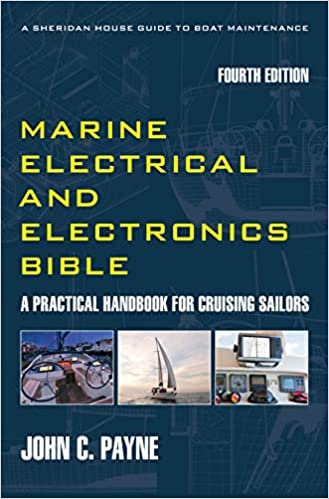Boat Risk Assessment
About boat risk assessment. Several years ago I made a presentation to one of the ARC Rally Seminars. Over the past few years, apart from cruising yacht and motorboat electrical systems, I have been actively involved in many new large commercial ship and oil rig systems. Before we commission a new installation we carry out what is called a Failure Mode and Effects Analysis (FMEA), and then perform extensive testing and trials to prove and verify the conclusions.
After delivering a few lectures and receiving many emails from people, and witnessing the same mistakes I decided that the same principles could easily be adapted to smaller vessels, in particular cruising yachts and power boats. This exercise isn't as difficult as the name suggests, and it essentially entails the analysis of the boats starting and charging systems, as both are critical to propulsion or electrical power generation. You can extend this to every part of your boat, from rigging to steering and instrumentation and so on. When you perform an FMEA on your boat systems, you break each systems down as far as is practicable, looking at possible and probable failure modes, root causes of failures, criticality of failures, pre-failure indication, the probability of failures and the consequential effects.
Boat Risk Assessment
Conducting thorough risk assessments on yachts and sailboats is a critical component of safe and efficient maritime operations. Whether for private cruising or commercial chartering, these evaluations help identify potential hazards, mitigate risks, and ensure compliance with maritime safety regulations.
Yachts operate in dynamic environments where weather, mechanical systems, and human factors intersect. A risk assessment systematically examines these variables—such as fire hazards in engine compartments, man-overboard scenarios, or electrical faults in legacy systems—to determine the likelihood and severity of incidents. This proactive approach enables crews to implement control measures, such as installing smoke detectors, securing loose gear, or updating safety protocols.
Boat Risk Assessment
For vessels with complex systems—like aging 32V electrical setups or new 48 volt system or integrated inverter-charger configurations — risk assessments are especially vital. They help uncover vulnerabilities that could lead to equipment failure or onboard emergencies. By identifying these issues early, operators can prioritize maintenance, reduce downtime, and avoid costly repairs.
Risk assessments also enhance crew preparedness. By evaluating emergency procedures, escape routes, and communication protocols, crews can train effectively and respond confidently under pressure. This is particularly important when operating in remote anchorages or during offshore passages where external assistance may be delayed.
What is a Boat Risk Assessment FMEA
As described above the Failure Mode and Effects Analysis (FMEA) is a systematic analysis of all the potential failure modes that can feasibly occur. Once this is carried out then corrective or mitigating actions can be implemented so as to reduce these failures. This methodical exercise enables a cause and effect of potential failures to be studied.
The primary function of the exercise is the analysis of the systems and identification of any single point failures. In simple terms this means looking at what can happen in a worst-case situation. It is a fact that in most cruising yachts and motorboats there is virtually no redundancy on any of the systems. It is necessary to first identify all of the points that upon failure will also fail the entire system, and then devise suitable methods and strategies to improve reliability and provide some redundancy.
Boat Risk Assessment
Moreover, insurers and maritime authorities often require documented risk assessments as part of compliance and liability management. A well-maintained risk register not only demonstrates due diligence but can also reduce insurance premiums and improve operational credibility.
In essence, risk assessments are not just bureaucratic checklists—they are living tools that safeguard lives, protect assets, and uphold the integrity of maritime operations. For yacht owners and skippers committed to safety, professionalism, and peace of mind, regular risk assessments are an indispensable part of responsible seamanship.
What are Possible Failure Risks
It is important when assessing the failure risks to consider the following factors and statistics:
1. A failure in the battery charging system means no charging of batteries and therefore an eventual loss of all electrical power, and possibly propulsion engine starting, loss of communications, navigation instruments etc. All this from a failure of an alternator or a component within the alternator.
2. A failure in the engine starting system means no propulsion and no charging of batteries, and eventual loss of all electrical power. A simple failure of a solenoid can lead to no propulsion and no electrical charging.
3. Approximately 80% of all electrical system circuit failures are due to faulty or failed electrical connections.
4. Approximately 70% of equipment and machinery failures are attributable to poor or improper installation, and to a lesser degree poor maintenance procedures.
That is just the start point of looking at your boat systems and performing a boat risk assessment and all about boat maintenance.
